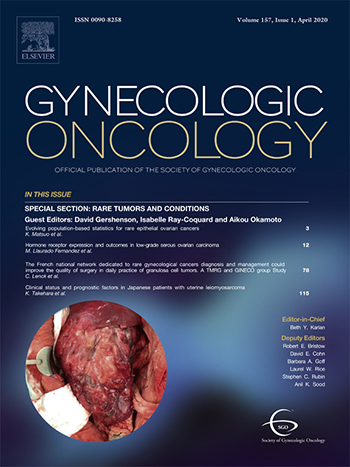Cornelia L. Trimble, Kimberly Levinson, Leonel Maldonado, Michael J. Donovan, Katharine T. Clark, Jie Fua, Maria E. Shay, Mary Elizabeth Sauter, Stephanie A. Sanders, Peter S. Frantz, Mihaela Plesa
Highlights
- Artesunate vaginal inserts are safe and tolerable in patients who have CIN2/3.
- Artesunate vaginal inserts can be self-administered, and only require room temperature storage.
- Self-administered intravaginal artesunate inserts can eliminate both CIN2/3 lesions as well as HPV.
Abstract Objective
Most treatment options for cervical intraepithelial neoplasia 2/3 (CIN2/3) are either excisional or ablative, and require sequential visits to health care providers. Artesunate, a compound that is WHO-approved for treatment of acute malaria, also has cytotoxic effect on squamous cells transformed by HPV. We conducted a first-in-human Phase I dose-escalation study to assess the safety and efficacy of self-administered artesunate vaginal inserts in biopsy-confirmed CIN2/3.
Methods
Safety analyses were based on patients who received at least one dose, and were assessed by the severity, frequency, and duration of reported adverse events. Tolerability was assessed as the percentage of subjects able to complete their designated dosing regimen. Modified intention-to-treat analyses for efficacy and viral clearance were based on patients who received at least one dose for whom endpoint data were available. Efficacy was defined as histologic regression to CIN1 or less. Viral clearance was defined as absence of HPV genotoype(s) detected at baseline.
Results
A total of 28 patients received 1, 2, or 3 five-day treatment cycles at study weeks 0, 2, and 4, respectively, prior to a planned, standard-of-care resection at study week 15. Reported adverse events were mild, and self-limited. In the modified intention-to-treat analysis, histologic regression was observed in 19/28 (67.9%) subjects. Clearance of HPV genotypes detected at baseline occurred in 9 of the 19 (47.4%) subjects whose lesions underwent histologic regression.
Conclusions
Self-administered vaginal artesunate inserts were safe and well-tolerated, at clinically effective doses to treat CIN2/3. These findings support proceeding with Phase II clinical studies.
“Having a well-tolerated, non-surgical treatment option for persons with HSIL/CIN2/3 would change the landscape of care for women who have CIN2/3.”
Cornelia Trimble, MD, Study Principal Investigator
Johns Hopkins, Director of Center for Cervical Dysplasia
Professor of Gynecology/Obstetrics, Pathology and Oncology

